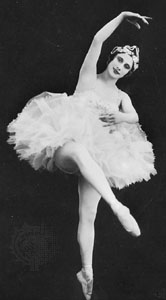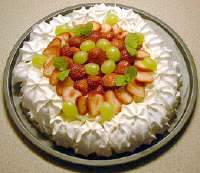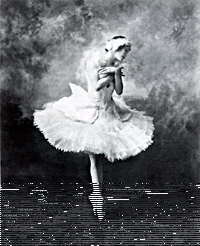
Anna Pavlova - Culver Pictures


Anna Pavlova - The Dying Swan
|
The Pavlova dessert was first
created in the early 1930s in honor of the ballerina Anna Pavlova, a Russian ballerina, the most celebrated dancer
of her time.
In the "Good Food Guide" to British Isles restaurants in
1977, a glossary of food terms referred to the Pavlova as a New Zealand
offering, which changed the next year to Australian. Hilary Fawcett, who
compiled the glossary, wrote about the change: "There does seem to
be some controversy as to whether the wretched thing originated in New Zealand
or Australia and I was reduced to doing a straw-vote count."
About Anna Pavlova
born Jan. 31, 1881, St. Petersburg, Russia
died Jan. 23, 1931, The Hague, Netherlands.
Pavlova studied at the Imperial School of Ballet at the Mariinsky
Theatre from 1891, joined the Imperial Ballet in 1899, and became a
prima ballerina in 1906. In 1909 she went to Paris on the historic tour
of the Ballets Russes. After 1913 she danced independently with her own
company throughout the world.
Let's make a Fruit Pavlova!
You will need:
- 4 egg whites or equivalent in meringue
powder
- A quarter of a teaspoon of salt
- 8oz caster sugar (finely granulated white sugar)
- 4 teaspoons of cornstarch (cornflour)
- 2 teaspoons of vinegar
- A quarter of a teaspoon of vanilla bean extract or a vanilla
bean
- Half a pint whipping cream
- Fresh ripe strawberries
- Green seedless grapes
- A selection of freshly picked garden flowers, strawberry leaves or mint
leaves
- An oven set to 215 deg. F (100 deg centigrade)
- A mixing bowl and mixing machine
- Pastry
bag
- Large star
tube
Next: Preparing the Meringue
|



